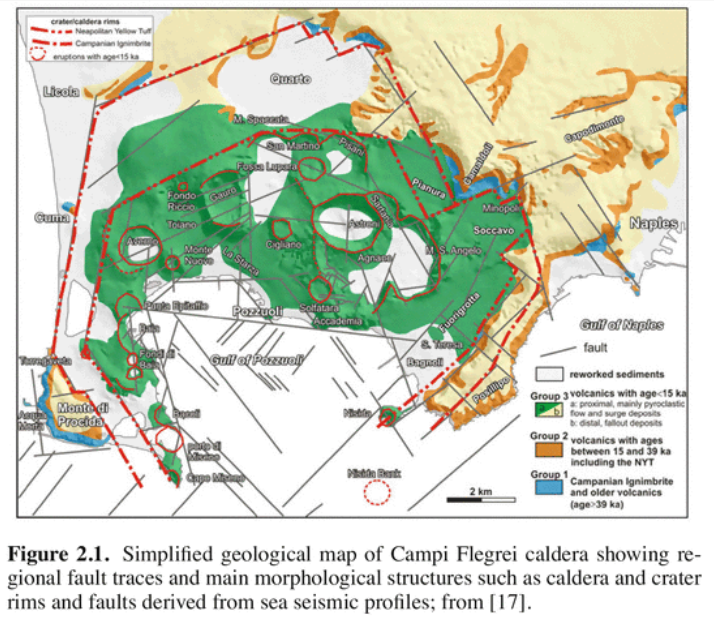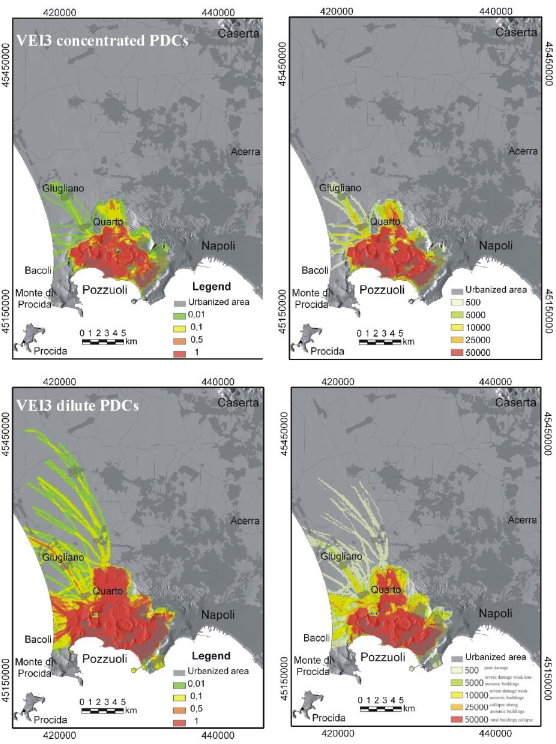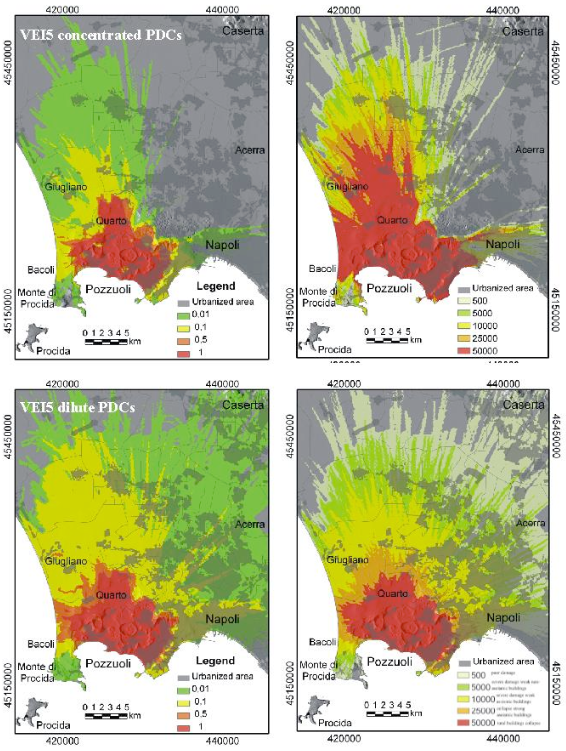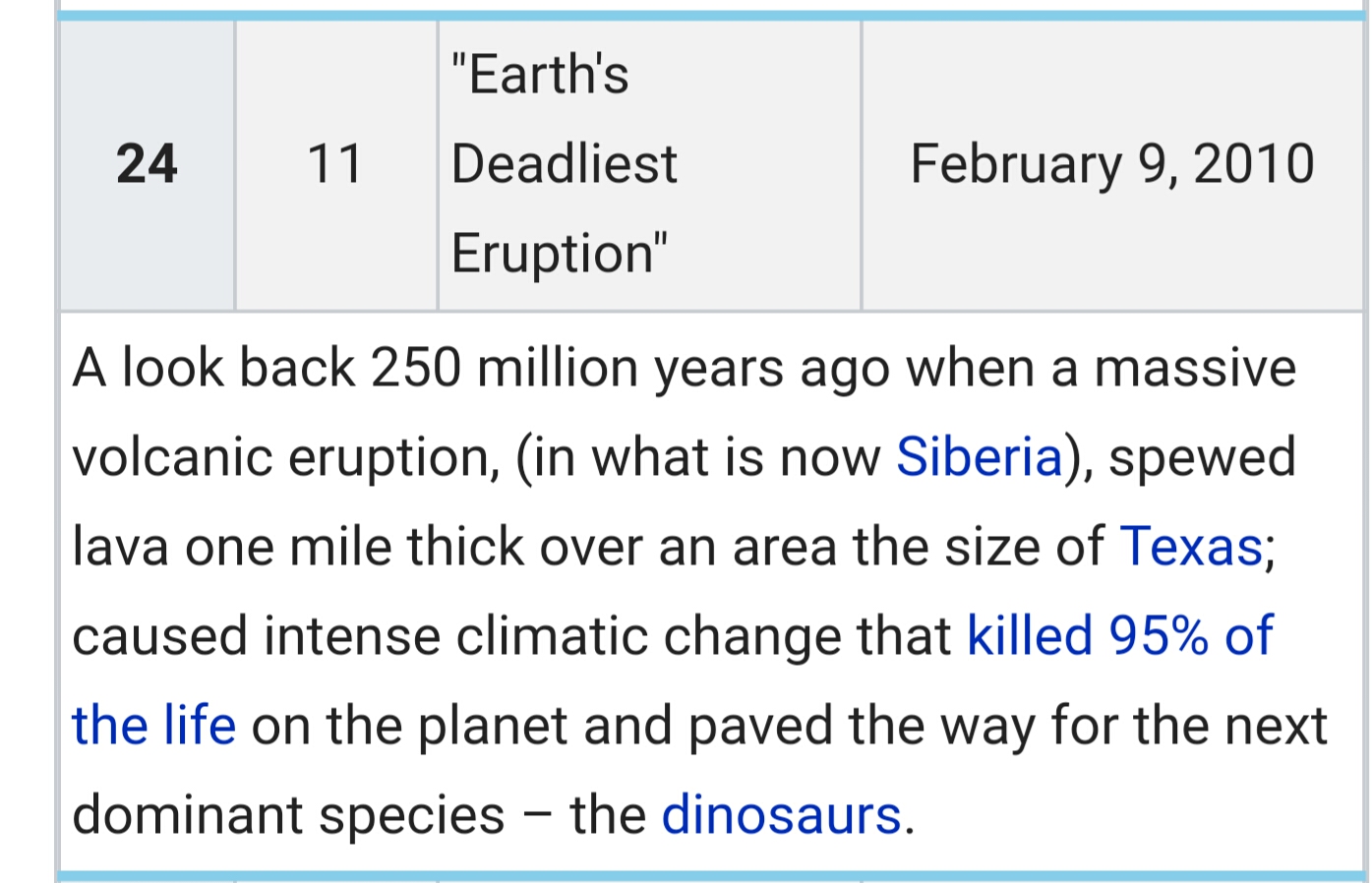It looks like you're using an Ad Blocker.
Please white-list or disable AboveTopSecret.com in your ad-blocking tool.
Thank you.
Some features of ATS will be disabled while you continue to use an ad-blocker.
share:
originally posted by: 0bserver1
a reply to: TrueAmerican
How serious would this be for the rest of Europe, I mean what can we expect when this thing goes off?
Well, if you are the eternal optimist, it will be a tiny, insignificant puff of smoke and that will be it. If you are a raging pessimist, then it is the end of the world as we know it, so you should feel fine.
Choose.
a reply to: TrueAmerican
There isn't a whole lot out there on what it would do. I did see one piece that said there would be huge tsunamis around the Mediterranean - Spain, Africa, etc. And in general, I would expect that you could look at the effects of Yellowstone which have been extensively speculated on and extrapolate the global effects. As far as the reach of the ash and others things, I would guess somewhere you might be able to dig up papers showing the extent of ash beds from the past eruptions of the caldera?
There isn't a whole lot out there on what it would do. I did see one piece that said there would be huge tsunamis around the Mediterranean - Spain, Africa, etc. And in general, I would expect that you could look at the effects of Yellowstone which have been extensively speculated on and extrapolate the global effects. As far as the reach of the ash and others things, I would guess somewhere you might be able to dig up papers showing the extent of ash beds from the past eruptions of the caldera?
originally posted by: 0bserver1
a reply to: TrueAmerican
How serious would this be for the rest of Europe, I mean what can we expect when this thing goes off?
TrueAmerican or someone with historical data might have more than my educated guess.
A previous poster mentioned tsunami's in Spain and Greece.
Since the Mediterranean only has one outlet: the Strait of Gibraltar, I'm thinking the whole coast will be under a tidal wave due to the force of the eruption. That includes the countries bordering the Adriatic Sea on the eastern side of Italy, Northern Africa, Israel, etc.
According to EuroWeather: Naples wind patterns, the winds comes from the SSW.
When St. Helen's erupted, the area near the mountain (like Portland) was coated in ash, however a good portion flowed east due to our winds blowing from the west.
I expect any countries that are north and east of Naples to get hit with some higher up ash.
Italy has the Alps in the north and the Apennines,which is the mountain range that goes down the leg of the peninsula.
I'm sure the ash will hit the mountain ranges, and blow it back west.
a reply to: ketsuko
It has had many eruptions over millions of years. Some VEI 4, some 5, some 6, and one I think I saw, that was a 7. They suspect it could even go VEI 8, due to the speculated size of the magma chambers. And the fact that half of it is submerged only complicates the matter further. If you want to know what happens when a supervolcano blows after millions of years under water, then I suggest you read my book.
It has had many eruptions over millions of years. Some VEI 4, some 5, some 6, and one I think I saw, that was a 7. They suspect it could even go VEI 8, due to the speculated size of the magma chambers. And the fact that half of it is submerged only complicates the matter further. If you want to know what happens when a supervolcano blows after millions of years under water, then I suggest you read my book.
Here's a nifty little map tucked away behind a paywall:

TA, this looks like something you might be interested in:

TA, this looks like something you might be interested in:
The monitoring system of the Campi Flegrei caldera is made up of a dense geophysical network of seismological and geodetic instruments with data acquired and processed at the Monitoring Center of INGV in Naples. As one third of the caldera is covered by the sea, a marine monitoring system has been operating since 2008 in the center of the gulf of Pozzuoli, where the sea depth is about 100 m at ~2.5 km from the coast. The main component of the monitoring system is CUMAS (Cabled Underwater Multidisciplinary Acquisition System), which consists of a sea floor module equipped with geophysical and oceanographic sensors (broad band seismometer, accelerometer, hydrophone, bottom pressure recorder and single point three component water-current meter) and status and control sensors. CUMAS is connected by cable to the top of an elastic beacon buoy equipped with the power supply and data transmission devices. The buoy consists of a float placed below sea level, surrounding and holding a steel pole that supports a turret structure above sea level. The pole, turret and float system are rigidly connected to the ballast on the sea bottom. Thus a GPS installed on the turret can record the vertical sea floor displacement related to the volcanic activity of the area. The GPS has operated since January 2012 with continuous acquisition lasting more than three years and has recorded a cumulative seafloor uplift of about 7-8 cm. The comparison of the pattern of the GPS buoy data with those of the land stations confirms a quasi-symmetrical vertical displacement field of the caldera area. Measurement of vertical sea floor displacement has also been obtained by the analysis of bottom pressure recorder data. These results, in conjunction with the analysis of seismic and hydrophone data, have encouraged us to extend the marine monitoring system with the deployment in the Gulf of Pozzuoli of three new similar systems. We also present preliminary results of the first few months of activity of these new systems.
a reply to: jadedANDcynical
I've seen all of that and more, in an attempt to gain access to the raw data, but no luck. It just makes me realize of how lucky we are that in the US, science is very open to public input, and makes raw seismic data from volcanoes and other seismic systems available to those that really want it- even if they are just like me, members of the public.
That is a double edged sword though. On one hand it may take years for the public to calm down and understand what they are seeing, but in the end it really has served the YVO and other volcano observatories well to make the data available. Keeping the data for Flegrei all bottled up in one volcano observatory is a bad, bad idea. But that's what is going on. It is only available to specialists and researchers with credentials.
Oh, but I forgot: according to one poster above, he knows everything, so all we have to do is ask. Yeah, get me access to the raw data, then I'll believe you.
I've seen all of that and more, in an attempt to gain access to the raw data, but no luck. It just makes me realize of how lucky we are that in the US, science is very open to public input, and makes raw seismic data from volcanoes and other seismic systems available to those that really want it- even if they are just like me, members of the public.
That is a double edged sword though. On one hand it may take years for the public to calm down and understand what they are seeing, but in the end it really has served the YVO and other volcano observatories well to make the data available. Keeping the data for Flegrei all bottled up in one volcano observatory is a bad, bad idea. But that's what is going on. It is only available to specialists and researchers with credentials.
Oh, but I forgot: according to one poster above, he knows everything, so all we have to do is ask. Yeah, get me access to the raw data, then I'll believe you.
edit on Thu Dec 22nd 2016 by TrueAmerican because: (no reason given)
a reply to: TrueAmerican
Regardless of the size of the eruption, if it decides to pop, the people in Naples are gonna have a really bad day.
Regardless of the size of the eruption, if it decides to pop, the people in Naples are gonna have a really bad day.
a reply to: TrueAmerican
I see ,so I guess the damn thing has stomach pains and just farted a puff of smoke nothing to worry then..
I see ,so I guess the damn thing has stomach pains and just farted a puff of smoke nothing to worry then..
a reply to: TrueAmerican
Figured you probably had, but also thought it wouldn't hurt to include.
I find this bit interesting:
Simultaneous eruptions from multiple vents at Campi Flegrei (Italy) highlight new eruption processes at calderas
So, instead of one HUGE caldera erupting, there might be a field of really large volcanoes going off all at once? Am I reading that right?
Someone was looking for maps of potential damage, Here are some extrapolations:
VEI2:

VEI3:

VEI4:

VEI5:

And
VEI6:

All above from this .pdf
Figured you probably had, but also thought it wouldn't hurt to include.
I find this bit interesting:
The results of this study demonstrate that multi-vent activity at calderas could be more common than previously thought and volcanic hazards could be greater than previously evaluated. More generally we infer that the simultaneous rise of magma and gas along different pathways (multiple decrepitation of chamber[s]) could result in a sudden pressure rise within the sub-caldera magmatic system.
Simultaneous eruptions from multiple vents at Campi Flegrei (Italy) highlight new eruption processes at calderas
So, instead of one HUGE caldera erupting, there might be a field of really large volcanoes going off all at once? Am I reading that right?
Someone was looking for maps of potential damage, Here are some extrapolations:
VEI2:

VEI3:

VEI4:

VEI5:

And
VEI6:

All above from this .pdf
Hmmm..
Abovetopsecret.com...
Connected??
I'm not much of a doom monger but if True American is concerned we all should be.His evidence plus the bad omen is bad.What could be worse is it blowing up during the winter months destroying many countries harvests.Possible and terrifying.
Abovetopsecret.com...
Connected??
I'm not much of a doom monger but if True American is concerned we all should be.His evidence plus the bad omen is bad.What could be worse is it blowing up during the winter months destroying many countries harvests.Possible and terrifying.
edit on CSTThupm4461 by TDawg61 because: (no
reason given)
edit on CSTThupm4461 by TDawg61 because: (no reason given)
originally posted by: jadedANDcynical
So, instead of one HUGE caldera erupting, there might be a field of really large volcanoes going off all at once? Am I reading that right?
Well, according to that very paper, they present geologic evidence that at least two vents went off simultaneously. And that begs an important question: if two vents of VEI 4 go off at once, does that equal a VEI 8?
And worse, what if three vents went off at once, each with VEI 6. Does that equal a VEI 18? But wait, there is no such thing as a VEI 18!
Or is there? That is what this paper is basically saying, that some caldera systems could have multiple vents going off at once, and therefore the threat is greater than previously thought. Flegrei is that type of volcanic complex, where there are multiple vents, and multiple calderas. The explosivity issue is determined by the type and silica content of erupting magma. But that is greatly affected by local geology, and the potential for magma interaction with water. It can cause one volcano to explode, whereas the same type at another volcano might not, because of lack of a hydrothermal system, or porous rock material that can let accumulating gas escape the magma.
I think the bottom line is though that the VEI is calculated for total volume of eruption, whether from a single, or multiple vents.
edit on
Thu Dec 22nd 2016 by TrueAmerican because: (no reason given)
a reply to: TrueAmerican
I thought that they really don't know the precursors from a super-volcano because we have never had on recent enough to know what happens before they erupt? In other words they are using theory to analyze what or more importantly when the thing could blow.
I also wonder what the effect of so much weight of water on the caldera could do to muffle seismic activity and uplift until the pressure reaches a critical runaway point? Meaning they may underestimate the actions prior to eruption.
I have always thought that the Earth can shake off warming like a sneeze. This would do that. The increasing albedo (reflectivity) could bring about another ice-age. I have always wonder what event could have caused such a rapid freeze that live plants and animals like mastodons were nearly flash frozen. There is a sub-tropical glacier, in Peru I believe, where plants are coming out underneath the retreating glacier that didn't have a chance to react quickly enough to the sudden freeze.
I will be keeping an eye on this thread and hope you do get access to live data and spectro.
I thought that they really don't know the precursors from a super-volcano because we have never had on recent enough to know what happens before they erupt? In other words they are using theory to analyze what or more importantly when the thing could blow.
I also wonder what the effect of so much weight of water on the caldera could do to muffle seismic activity and uplift until the pressure reaches a critical runaway point? Meaning they may underestimate the actions prior to eruption.
I have always thought that the Earth can shake off warming like a sneeze. This would do that. The increasing albedo (reflectivity) could bring about another ice-age. I have always wonder what event could have caused such a rapid freeze that live plants and animals like mastodons were nearly flash frozen. There is a sub-tropical glacier, in Peru I believe, where plants are coming out underneath the retreating glacier that didn't have a chance to react quickly enough to the sudden freeze.
I will be keeping an eye on this thread and hope you do get access to live data and spectro.
edit on 22/12/16 by spirit_horse because: (no reason given)
Subscribed for updates, S&F. Thank-you.
My "feelings" are nothing, and my skepticism ensures I don't rely solely on them, but for what it's worth... I have strange (not good) feelings in my gut about this one. (But then I'm an anxiety prone person so, take with 3,000 metric tons of salt. :p)
Peace.
My "feelings" are nothing, and my skepticism ensures I don't rely solely on them, but for what it's worth... I have strange (not good) feelings in my gut about this one. (But then I'm an anxiety prone person so, take with 3,000 metric tons of salt. :p)
Peace.
I remember an episode of "How the Earth was Made"...
Well.. here...

Are we at all looking at something like this if it goes?
Well.. here...

Are we at all looking at something like this if it goes?
originally posted by: ketsuko
a reply to: UberL33t
No. That's a different kind of eruption.
It kills you slowly over a period of months and years.
...Thank you for the clarification. Still unnerving..
...And then there's this one too... She seems pretty angry.. Mother Earth that is.
Unusual Chile volcano activity sparks interest, worries
TA, et al.. this one still on your radar?
Volcanic eruption = bad... that is obvious.
However, just a thought I was having after looking at a map of where Naples is in relation to neighboring countries.. A whole line of countries to the east have a war going on and all with the US involved on some level (Syria, Iraq, Afghanistan). If this volcano were to blow in spectacular fashion, these countries would be dealing with the fall out in a major way. So would they all just stop fighting then and deal with the more immediate problem of survival? Just thinking perhaps it would become difficult to run war machines in such a climate...
A silver lining on a cloud of volcanic ash?
However, just a thought I was having after looking at a map of where Naples is in relation to neighboring countries.. A whole line of countries to the east have a war going on and all with the US involved on some level (Syria, Iraq, Afghanistan). If this volcano were to blow in spectacular fashion, these countries would be dealing with the fall out in a major way. So would they all just stop fighting then and deal with the more immediate problem of survival? Just thinking perhaps it would become difficult to run war machines in such a climate...
A silver lining on a cloud of volcanic ash?
a reply to: UberL33t
Yeah, it's still on my radar. But consider this: Maule has the highest rate of uplift on the entire planet currently. Of any volcanic system on earth. And what's the alert level at? Green. The lowest.
You just can't fix stupid. But you can kill it with a volcanic eruption, maybe.
Yeah, it's still on my radar. But consider this: Maule has the highest rate of uplift on the entire planet currently. Of any volcanic system on earth. And what's the alert level at? Green. The lowest.
You just can't fix stupid. But you can kill it with a volcanic eruption, maybe.
new topics
-
Only two Navy destroyers currently operational as fleet size hits record low
Military Projects: 9 hours ago
top topics
-
George Stephanopoulos and ABC agree to pay $15 million to settle Trump defamation suit
Mainstream News: 15 hours ago, 17 flags -
Only two Navy destroyers currently operational as fleet size hits record low
Military Projects: 9 hours ago, 8 flags
active topics
-
George Stephanopoulos and ABC agree to pay $15 million to settle Trump defamation suit
Mainstream News • 12 • : TzarChasm -
Encouraging News Media to be MAGA-PAF Should Be a Top Priority for Trump Admin 2025-2029.
Education and Media • 91 • : TzarChasm -
More Bad News for Labour and Rachel Reeves Stole Christmas from Working Families
Regional Politics • 4 • : gortex -
One out of every 20 Canadians Dies by Euthanasia
Medical Issues & Conspiracies • 25 • : fos613 -
Only two Navy destroyers currently operational as fleet size hits record low
Military Projects • 2 • : Bluntone22 -
They Know
Aliens and UFOs • 89 • : fos613 -
Pelosi injured in Luxembourg
Other Current Events • 37 • : fos613 -
-@TH3WH17ERABB17- -Q- ---TIME TO SHOW THE WORLD--- -Part- --44--
Dissecting Disinformation • 3695 • : RelSciHistItSufi -
Nov 2024 - Former President Barack Hussein Obama Has Lost His Aura.
US Political Madness • 16 • : Coelacanth55 -
Mood Music Part VI
Music • 3735 • : BrucellaOrchitis
